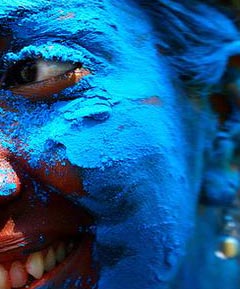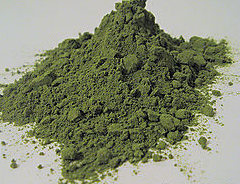 REPORT
/ INTERNATIONAL NEWS REPORT
/ INTERNATIONAL NEWS
|
|
Previous Article
Herbal Holi
This Holi be green and clean!
Source: Toxics Link Fact Sheet, Date: , 2009
 Holi which marks the harvest of Rabi cropand the arrival of springwas traditionally celebrated using natural coloured extracts from seasonal herbs. However, gradually these herbs were replaced by synthetic dyes ,some of which are toxic.This is because of the presence of mica,acids,alkalis, pieces of glass etc that are hazardous to huma Apart from inducing skin irritation and abrasion and these chemicals can go as far as impairing vision, causing cancer and respiratory problems. Broadly there are three categories of colours available in the market:paste,dry powder and wet colours.All these could be hazardous.The hazard increases when these are mixed with oil .Oil helps the rogue chemicals to seep into the skin easily. Holi pastes contain harmful chemicals such as Lead oxide (common in black colour), copper sulphate (found in green colour),aluminium bromide (in silver colour), prussian blue ( blue colour) and mercury sulphite ( a major component in red colour).These can cause renal failure, eye allergy, puffiness, temporary blindness, cancer etc. Dry colours or gulaals have two components -a toxic colourant and a base which could be either asbestos or silica. Both these, especially asbestos, can cause health hazards even if exposure is limited.Gulaal has heavy metals called systemic toxins that can get deposited on kidneys, liver and bones .Presence of lead in Holi colours can lead to learning disorder,chromium to bronchial ailments,cadmium to fragile bones, nickel to dermatitis , mercury to nervous system disorder etc. The wet colours have mostly gentian violet as a colour concentrate that can cause skin discolouration, dermatitis,irritation of mucous membrane etc. With all these talks regarding toxins in Holi, at least some
of us should be uncomfortable smearing and drenching ourselves and friends and
relatives in Holi colours. However, it is very difficult to keep away from this
very popular and colorful festival in India. So is there a way out? There is. This year let us have a Herbal Holi. But how? The most favourite Holi colour seems to be Red. You can make
it at home naturally with red sandalwood powder. Dry red hibiscus flower,
powdered, can also act as gulal. For the wet red colour, you can use juices of
carrots and tomatoes adequately mixed in water, peels of red pomegranate boiled
in water and of course last but not the least, red sandalwood powder mixed in
water.  For green colour, try henna powder or a paste of green
leaves such as spinach, coriander and mint. Yellow color can be obtained by
soaking marigold petals overnight and also from turmeric. 
Previous Article
|
|



 For green colour, try henna powder or a paste of green
leaves such as spinach, coriander and mint. Yellow color can be obtained by
soaking marigold petals overnight and also from turmeric.
For green colour, try henna powder or a paste of green
leaves such as spinach, coriander and mint. Yellow color can be obtained by
soaking marigold petals overnight and also from turmeric.